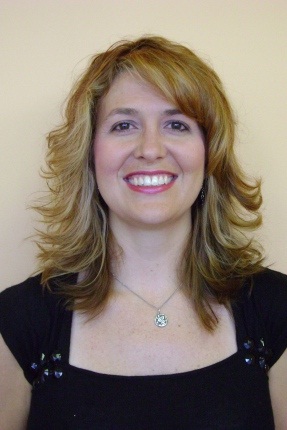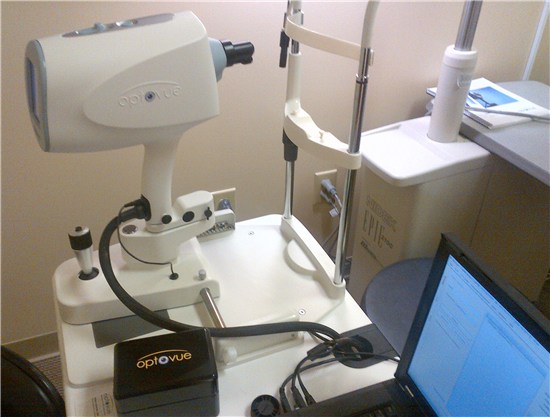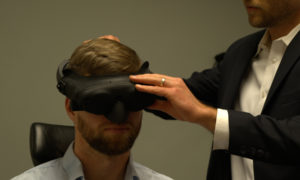By Monica Allison, OD,
Fellow Ortho-K Academy of America (FOAA)
Investing in diagnostic instrumentation is a major practice expense–but an essential business builder. Plan well and finance smartly to maximize ROI and maintain cash flow.
I take pride in having a practice with high-quality instrumentation that allows us to deliver advanced eyecare to patients. Instrumentation is expensive, and it’s important to plan purchases, finance them intelligently and continually upgrade. I focus first on which instruments would most enhance my patients’ care, and then I crunch the numbers to see if making the investment would be financially possible for my practice.If it will improve care, or efficiencies, and we have the money, we make the investment. I have spent $290,500 on instrumentation in the last five years. In return, $844,350 has been applied in medical billing and testing during that same time period.
The OCT was the most expensive item my practice invested in, and I paid cash for it. Because the reimbursement is so low on the OCT now, and we have only had it for a year, it will take a while to recoup our investment, but it is a necessary tool in managing our patients to the highest level. I expect it will take another six to 12 months to recoup our initial investment, for a total of 18-24 months.
How Much Should You Spend on Instrumentation?
Independent ODs allocate a median of 2 percent of revenues to equipment, a category that consists largely of instrumentation, according to Key Metrics: Assessing Optometric Practice Performance by the Management & Business Academy (MBA). For an average practice with $650,000 in revenue, that amounts to $13,000 a year. MBA data also shows levels of instrument penetration by category. Since instrument purchases are major investments, look to maximize your dollars and ensure steady cash flow by leasing or taking out a loan and paying off the purchase over time. –ROB editors
Identify the Key Pieces of Instrumentation Needed in Your Office
To start thinking about needed instrumentation, decide what is a must for your office. For my practice, that includes the following key instruments:
Basic Equipment
Phoropters, slit lamp, pachymeter, tonometer, retinal camera, lens case
Advanced Equipment
Optomap, computerized refraction system, corneal topographer, anterior segment camera and OCT
How Much Should You Spend on Instrumentation?
If an instrument improves patient care or patient flow in the office, and isn’t cost prohibitive to implement, we will probably purchase that instrument since we always want the best technology in our office. I never buy an instrument just because it can bring in a certain amount of dollars. It has to be a useful and necessary tool to aid in patient care. I ask myself: Can I practice at a higher level with it, and will it aid in diagnosis or treatment?
Is a New Instrument Worth the Investment?
Calculate the ROI of the potential instrument then subtract the acquisition cost to determine if you can afford to buy or lease the equipment. Do this whether or not there is a reimbursable code. Does the instrument allow you to see more patients, does it eliminate a staff position? Are there any other efficiencies the instrument will provide your office? If so, it may be a worthwhile investment.
–ROB Editors
How Long to Break Even on Investment?
I feel any instrument should pay for itself in billing every month it is used. If it is an efficiency improver, there needs to be an increase in patient numbers to cover the cost of the instrument. For example, on the Optomap lease program, I need to have enough Optomaps purchased to cover it every month. I plan on buying out the lease when I have that option in my contract.
Forward-Thinking Needed
Sometimes purchases are based on expected practice-building, rather than the current state of the practice. For example, I purchased a topographer before getting into corneal refractive therapy and it is an absolute must for these patients. The investment has paid off as we have grown our CRT practice tremendously over the years. We purchased the OCT anticipating more glaucoma patients and macular patients as my patient population ages, and it is standard of care for my many plaquenil patients.
Purchase or Lease?
Usually I purchase instruments unless the lease to buy has very low interest and good terms. With the section 179 federal tax deduction, you can borrow money to pay for instruments and take the full deduction the year you purchased it, but then you have to know the impact of not being able to deduct the payments for it in the future. Consult with your accountant about the tax implications of leasing versus purchasing.

Instrumentation in Dr. Allison’s office.
Most Profitable Instrument May Surprise You
Optomap had the most wow factor for patients, but the most profitable is the slit lamp camera adaptor for external photography. For $69 you can get an iPhone adaptor and take great slit lamp photos and bill for them.
Code for Reimbursement of Photos Taken and Advise Patient of Fee
To ensure you get a return on your investment on instrumentation, be sure to understand the requirements for billing insurance companies for photos taken. For instance, you need to show documentation of the doctor’s orders for the photo, a documented interpretation and a report for each photo taken. Since insurance often does not cover photos taken with instrumentation, or may not fully cover the cost, it is best to advise patients of any related expense they will be responsible for.
Office Renovations or Expansion Sometimes Needed to Accommodate Instrumentation
We have expanded twice to accommodate more room in the office. When we added two new doctor lanes, we wanted a new screening area as well so there wouldn’t be a stop gap in the pre-screen area. We currently have three pre-screen areas; one that all patients start at (because we only have one Optomap) and then two separate ones that each have the same things: auto-refractor, I-Care tonometer and topographer.
Have Vendor Train Staff Prior to Instrument Roll-Out
We are careful to have the vendor train our staff before each instrument is rolled out to patients. There has not been a problem yet with any vendor not providing adequate training. In fact, this training is almost always complimentary as part of your contract when you make your purchase or sign your lease agreement. It’s just a part of the customer service most instrumentation vendors provide–so take advantage of it.
When Should You Invest in Instrumentation?
OD owners should invest in new instrumentation not once but several times in the course of a 30-year optometric career, according to the Optometric Wealth-Building Timeline from Vision One Credit Union. The first purchase should come at about the fourth year of practice ownership, once net cash flow has recovered from the initial cost of purchasing the practice. Another time for purchasing new instrumentation is at about the 27th year, or about three years prior to the sale of the practice, again to allow for net cash flow to recover and to maximize practice value. –ROB Editors
Related ROB Articles
Removing Roadblocks to Change: Advanced Instrumentation
Explain Your Instrumentation…and Send a High-Tech Message
Intelligent Investing: Crunch the Numbers–and Analyze Your Patient Base
Related ROB Video
Purchasing Instrumentation: Invest in Practice Growth
Monica Allison, OD, FOAA, is the owner of Stone Oak Vision Source, with two offices in San Antonio, Texas. To contact her: drmonicaallison@yahoo.com



























